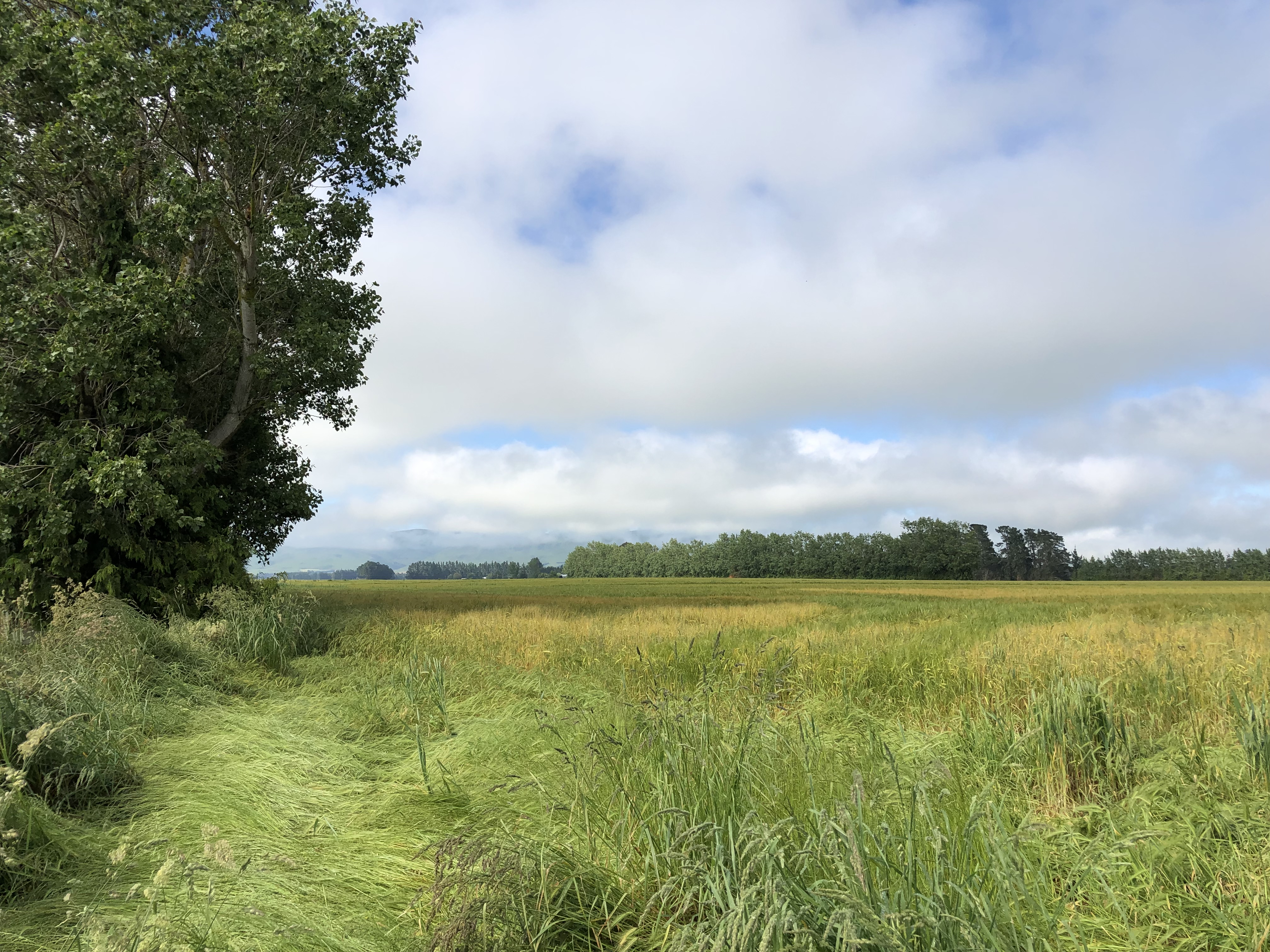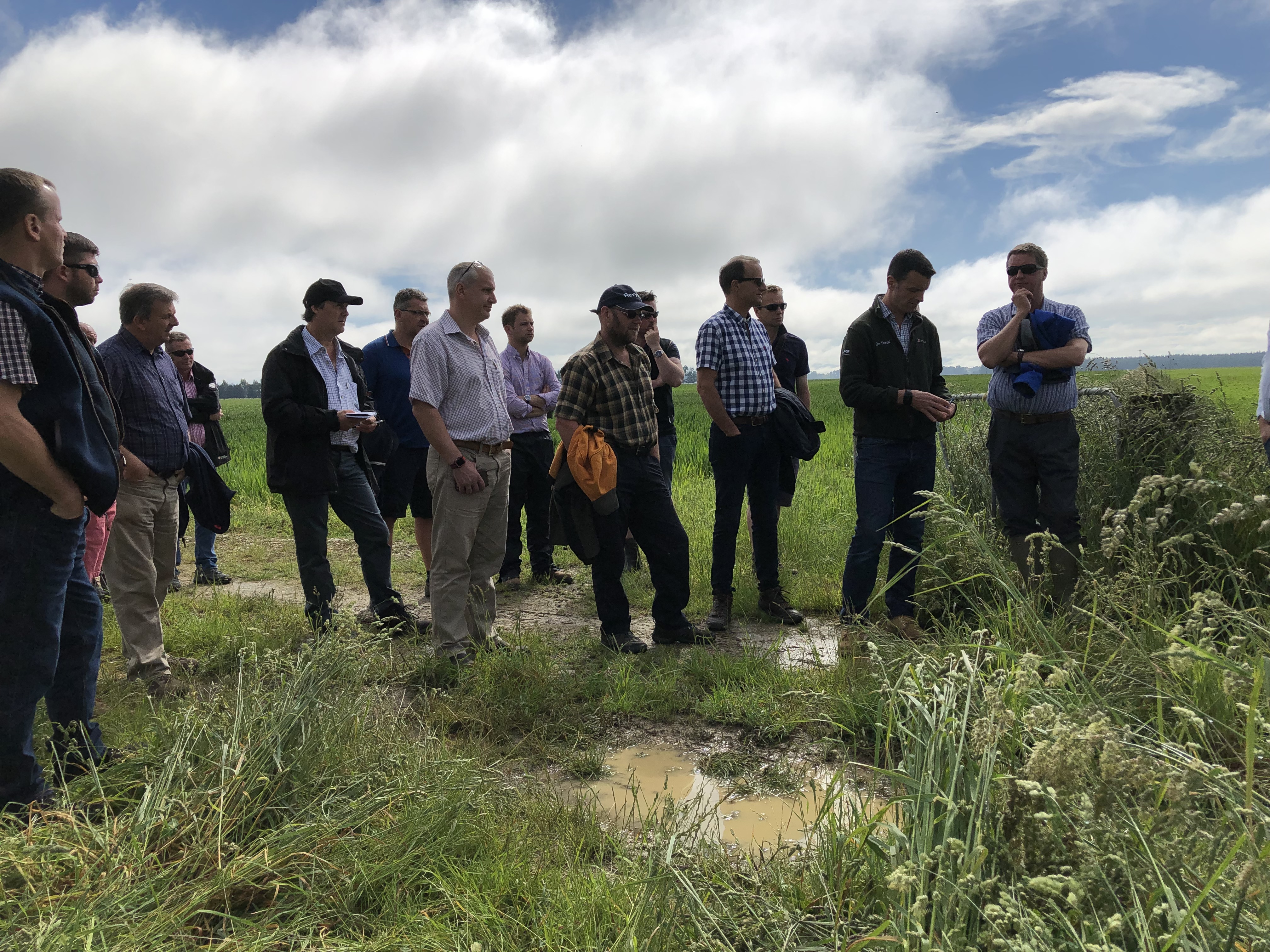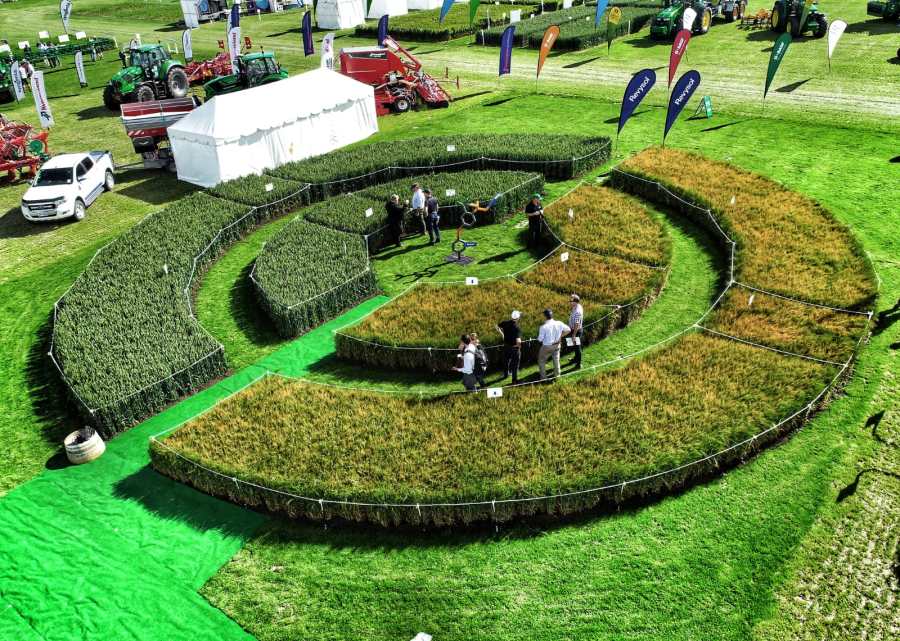At the coal face of commercial agriculture without the cushion of subsidies, farming in New Zealand is less about technical fripperies and more an understanding of farming fundamentals, as 15 UK growers found on a recent study tour. CPM reports.
The removal of subsidies is the best thing that happened, and there are few of us that would want them now.
By Tom Allen-Stevens
‘Di-worsification’ is something New Zealand farmer Blair Drysdale is keen to avoid.
“It’s when you diversify your business too much,” he explains. “If you try to become Jack of all trades but master of none, you end up worse off than a business that puts all its eggs in one basket.”
That said, Drylands Farming, run by Blair and his wife Jody, has a fairly neat range of enterprises across the 325ha they farm at Balfour, on South Island. Around half of the farm is in a predominantly cereal rotation, in which two years of barley (both autumn and spring-sown) follow two of autumn-sown wheat.
Tulip bulbs are grown on land leased out and rotated around the arable area, forming a major cash-earner for the business. These follow two years of fodder crops – forage rape followed by grass – for the farm’s 1500 store lambs. The sheep enterprise also runs over the rest of the farm that’s in permanent pasture and this also provides grazing for a beef herd and dairy heifers.

Most of the farm lies on Crookston soils – a deep silty loam with a good rooting depth and high plant-available water.
“The dairy sector drives the cereal market here,” he notes. “All the cereals go to local dairy farmers as stock feed, which leaves you very exposed when dairy prices crash – we’ve had times recently when cereal prices have fallen below NZ$250/t (£130/t), although they’re currently around NZ$400/t (£207/t).”
Blair’s farm is one of a number visited by 15 UK arable farmers selected for the BASF Innovation Tour, that took place over two weeks in Nov (see panel on pxx). Although on the other side of the world, the land and climate are not too dissimilar to the UK – Blair’s annual rainfall is around 780mm, although this season, a fair amount of this has fallen during the spring and summer, hampering fieldwork. Most of the farm lies on Crookston soils – a deep silty loam (about 20-25% clay content) with a good rooting depth and high plant-available water.
What sets his business apart from most arable enterprises in the UK, however, is that it operates without subsidy. “Grandad bought the farm about 50 years ago, and then subsidies were removed in the early 1980s – I remember Dad talking about it,” recalls Blair.
“For the first few years it was hard, but it drove a lot of innovation, and productivity and efficiencies increased. Jody and I took over the farm in 2007 and I’d say the removal of subsidies is the best thing that happened to farmers in New Zealand, and there are few of us that would want them now.”
The farming system has evolved, too. Originally it was all sheep, but falling profitability and the rising dairy sector pushed the farm towards introducing a 150-head beef and dairy grazing enterprise alongside the 3000 ewes. “This generated cashflow, but we began to get compaction problems, so around six years ago, we introduced an arable rotation.”
The move spread the risk and allowed the business to make more of its fertile soils. “The tulips form an important part of the rotation – nothing comes close in cash terms. They’re grown on contract for a firm in Holland which leases the land, grossing NZ$4000/ha (£2070/ha). They’re planted in the last week of April and harvested at the end of Jan. There’s only around 25-30ha, so we’re just about to go into the second seven-year cycle.”
Controlled burning of straw residues is still permitted in New Zealand, which Blair feels is an important part of keeping weed seeds in check, but he’s incorporating more straw. He currently follows a min-till regime for the cereals – two shallow passes with a 5m Amazone Catros precede a 5m Accord drill with Suffolk coulters. “We’re moving more towards no-till – there was an area drilled with a Claydon Hybrid last year with good results.”

The Innovation tour farmers heard how ramularia is now the big problem in barley – with no approval for chlorothalonil, this leaves few chemical options.
Surge is the autumn-sown barley variety about to go through the combine. “It’s an ugly-looking crop coming out of the winter, and sits there for a while. But then when it goes, it goes – you have to keep on top of it with PGR and then all through the spring it’s timing, timing, timing,” says Blair.
Phosphate and potash is applied in the autumn, following an annual soil test. Nitrogen is applied in two splits – around 50kgN/ha before the end of tillering with another 80-100kgN/ha two weeks later.
As for disease, ramularia is now the big problem in barley. There’s no approval for chlorothalonil, leaving few chemical options. “Fungicide resistance is a problem and it’s getting worse. With ramularia you need to keep the crop clean – if it takes hold on the flag leaf, there’s no getting rid of it.
“We’ve had a particularly difficult season this year, with some wet weather driving disease and that’s pushed timings all up the creek. Normally I’d start early with a T0 application of a cheap triazole, followed by two SDHI-based sprays each mixed with prothioconazole.”
Blair’s a keen advocate of on-farm trials to ensure he’s using the best options available. “It’s all very well looking over the hedge or going to field days, but I like to see how something performs on my own farm – I’m new to cereals, so still have a lot to learn, and on-farm trials are a very effective way to do so.”
Lately he’s been trying Imtrex (fluxapyroxad) against his usual farm standard of Seguris Flexi (isopyrazam). He’s also been using some of BASF’s new triazole Revysol, ahead of its commercial release in New Zealand later this year. “The difference between Imtrex and Seguris has been marginal on the barley this year. It’s difficult to know until the combine goes through, but I’m expecting the Imtrex to perform slightly better.
“Last year we saw a vast difference with strip trials in the wheat, however. We put Elatus (benzovindiflupyr+ prothioconazole) up against Adexar (fluxapyroxad+ epoxiconazole) and it was like daylight and dark – the Elatus-treated wheat was black with septoria.”
The big winner this year has been the Revysol. “The crop’s clean from top to bottom, with not a sign of any disease. The ramularia especially has been controlled well. The weather’s kept the barley growing and we have some big, bold ears, so I’d be disappointed if it doesn’t do 10t/ha, while our average yield is around 9t/ha.
“This is the season when we really could have benefited from having Revysol commercially available, and I can see a lot of growers will go for it next year. But we’ll have to use it carefully, balancing it with SDHIs and other chemistry, or we’ll lose its efficacy,” he notes.
For the future, Blair’s conscious that his cereal enterprise is closely aligned to the fortunes of the dairy industry. It’s not just international trade issues this is exposed to either – farming’s effect on the environment is coming under increasing scrutiny. Meat and dairy are two of New Zealand’s biggest exports, saddling the nation with a big greenhouse gas and nitrate pollution burden for its relatively low population. It’s an environmental cost not lost on the country’s green party which holds the balance of power in a minority, Labour-led government.
“The environmental side of things is one of the biggest drivers, and it keeps us focused when deciding where to take the business,” notes Blair. “For me, everything comes down to the soil – that’ll be the key to locking in carbon and keeping nutrients where they should be.”
He’s grown a small area of hemp this year, that will be harvested for its oil and sold locally. This was direct drilled, giving the crop a favourable environmental footprint, and it could form another means of spreading risk for the business.
“The way to spread risk but avoid di-worsification is to look at your business from outside and stay focused. This farm’s main asset is its topsoil – we’d be knackered if we didn’t look after it – and I have an eight-year-old son whose future we must consider too. So we’ll keep focused on the soil and everything else will look after itself.”
Innovation tour is a real result
Fifteen UK farmers won a place on BASF’s Innovation Tour to New Zealand after “scanning their cans” of Adexar and Librax last growing season. The group was made up of farmers from all over England, Wales and Scotland, including six participants from the 50 Real Results farms in the UK.
The 14-day tour included stops on both North and South islands, with a visit to a number of different farms and to Crops 2018, hosted by the Foundation for Arable Research (FAR). Growers on the tour also gained an insight into Revysol, BASF’s new triazole, as NZ growers prepare for its commercial roll-out later this year.
Despite many aspects of farming in New Zealand being similar to the UK, what struck Lincs grower Tim Beaver were the differences. “Soil, climate and attitude are just so different. Blair has these deep, alluvial soils and if he has no rain for two weeks, it’s a drought.
“But there’s a very positive attitude to farming – a lot of the business seems to be done on a handshake, and there’s a sense of trust in the industry. Yet they have a very realistic picture of risk, aiming to protect their businesses from market fluctuations and regulatory changes. The dairy and arable sectors have become very dependent on each other, and demand for dairy is really hotting up.”
Yields on many of the farms visited were consistently high, he notes. “Blair never has an autumn-sown wheat crop yielding below 9t/ha, for example. I was ready to pick up tips on what secret inputs he may be applying, but apart from being remarkably free of disease, the crop management didn’t appear out of the ordinary.
“The farmers are focused on gross margin and fixated on fixed costs, however. There are long rotations that include livestock, and this is very professionally managed.”
The tour was also a chance to see how Revysol performs. “The wet weather had put trials to the test, and although disease in untreated plots was generally low, compared with UK levels, ramularia is a big issue. This is where Revysol clearly performs, and you could see a difference wherever it had been used,” notes Tim.
Public attitude and regulation were other interesting points of comparison. “As in the UK, consumers are disconnected from their food and there’s a shortage of labour due to immigration policies, which is causing problems for the fruit industry especially.
“UK farmers are more regulated, although this is beginning to change, and New Zealand farmers face the challenge of new nitrate management policies coming in – pollution is clearly a problem.”
What struck Tim most was the solid grasp of farming fundamentals. “There’s less yield-mapping, precision farming and use of biostimulants in New Zealand, but a sound understanding of the soil, their farming systems and the markets, and a willingness to innovate to make these work.”
For full details of the winners, go to www.basfrealresults.co.uk
The Real Results Circle
BASF Real Results Circle farmer-led trials are now in their third year. The initiative is focused on working with 50 farmers to conduct field-scale trials on their own farms using their own kit and management systems. The trials are all assessed using ADAS’ Agronōmics tool which delivers statistical confidence to tramline, or field-wide treatment comparisons – a unique part of Real Results.
In this series we follow the journey, thinking and results from farmers involved in the programme. The features also look at some in-depth related topics, such as SDHI performance and data capture and use.
We want farmers to share their knowledge and conduct on-farm trials. By coming together to face challenges as one, we can find out what really works and shape the future of UK agriculture.
To keep in touch with the progress of these growers and the trials, go to www.basfrealresults.co.uk




